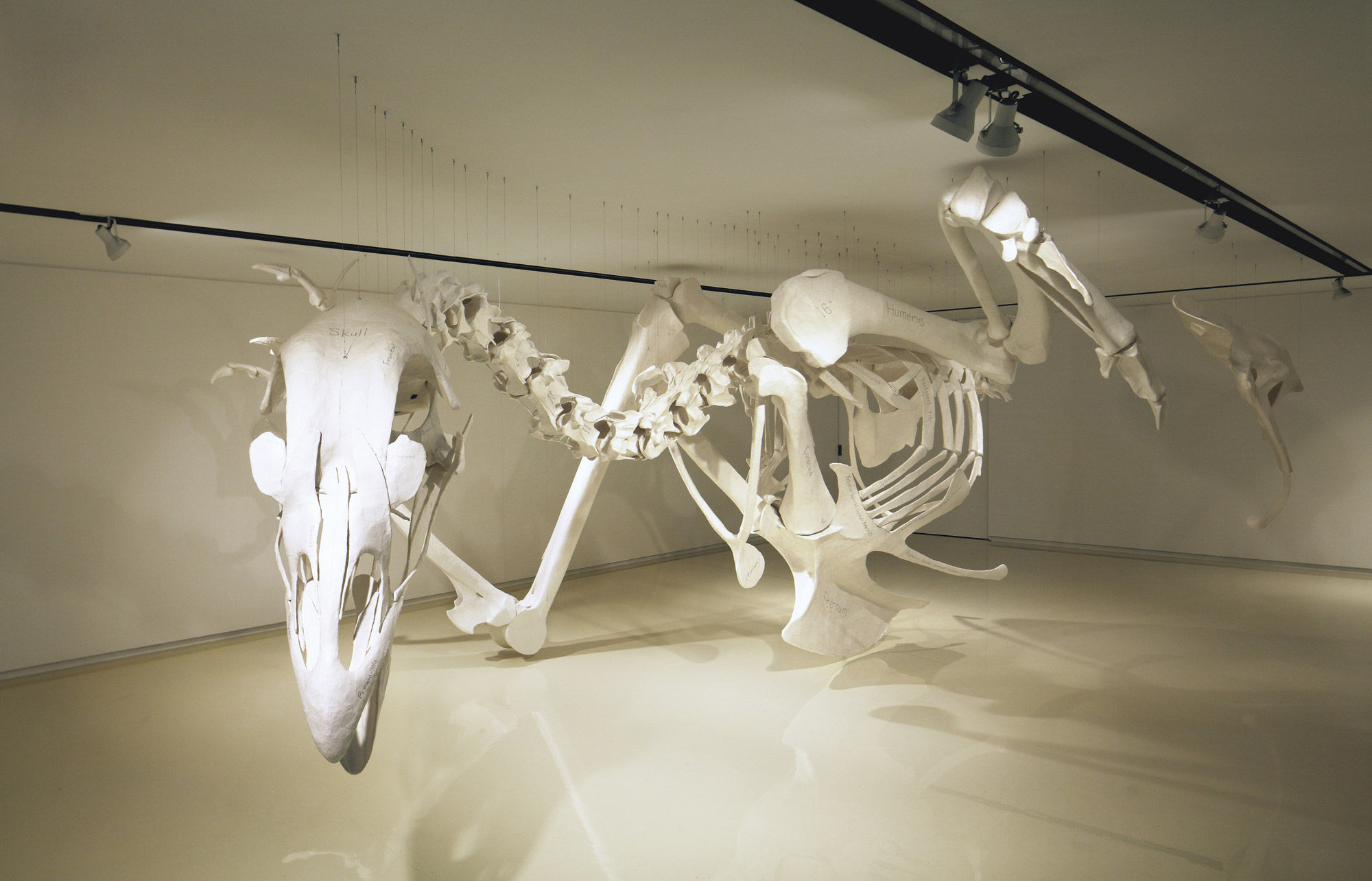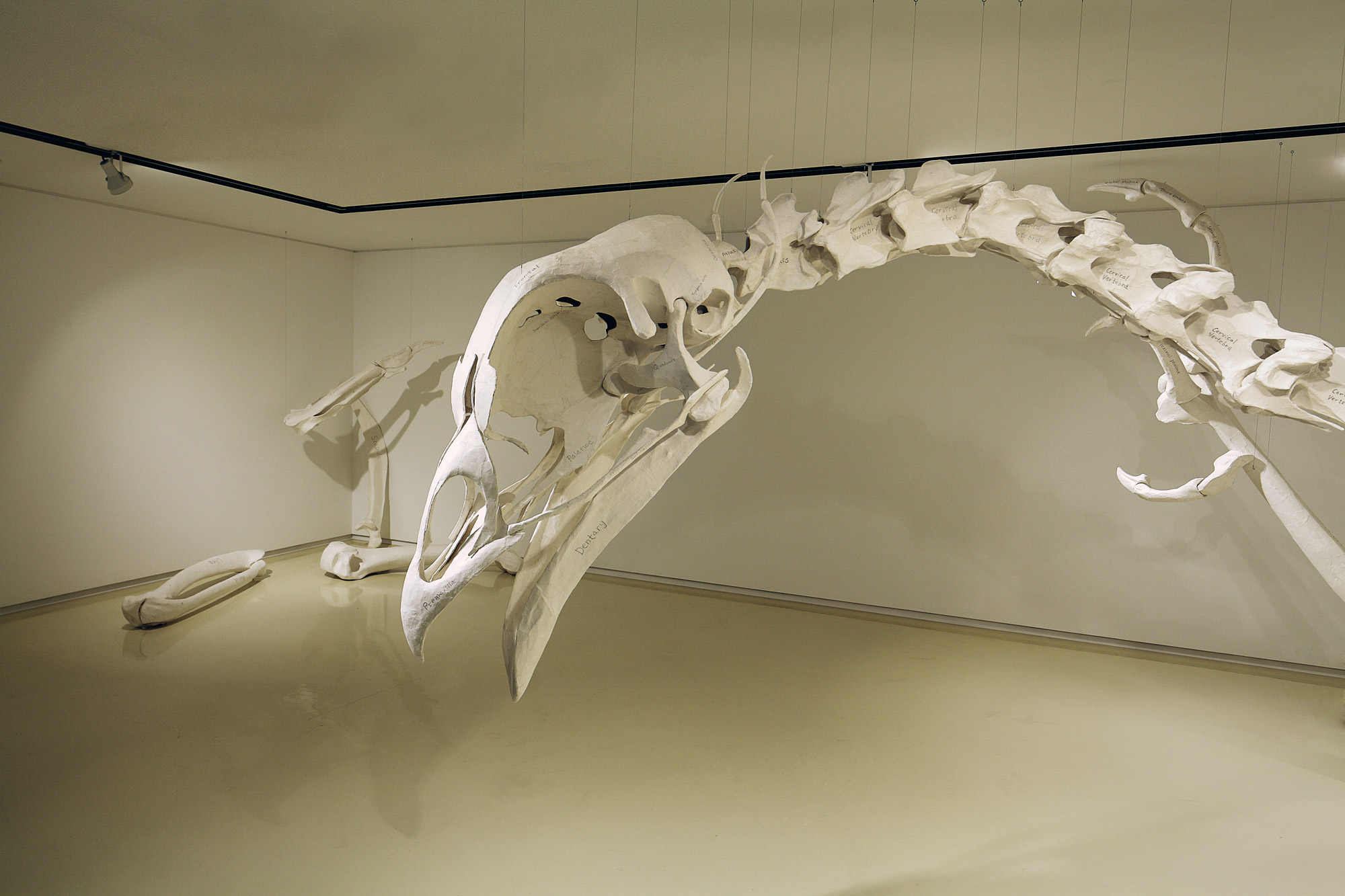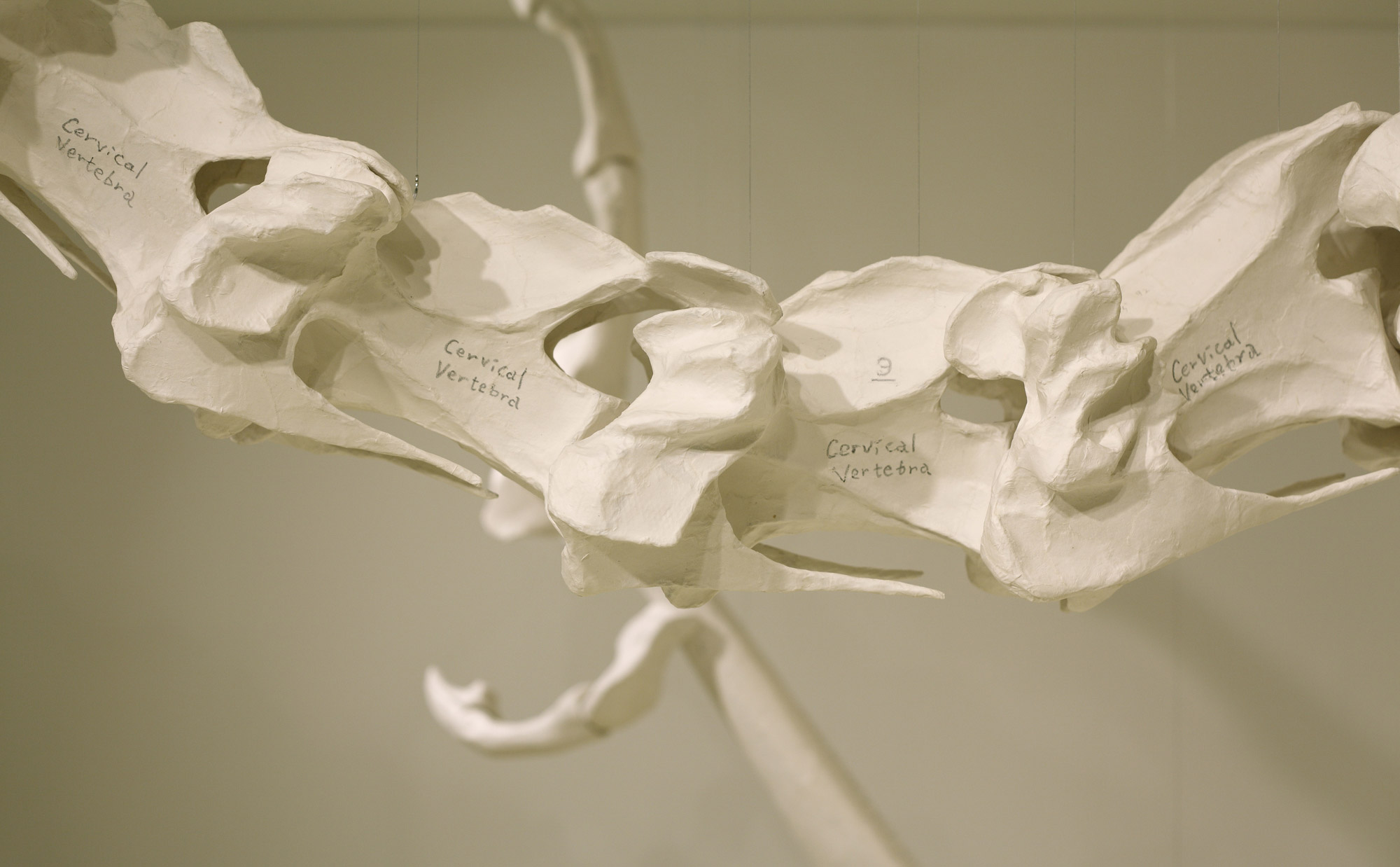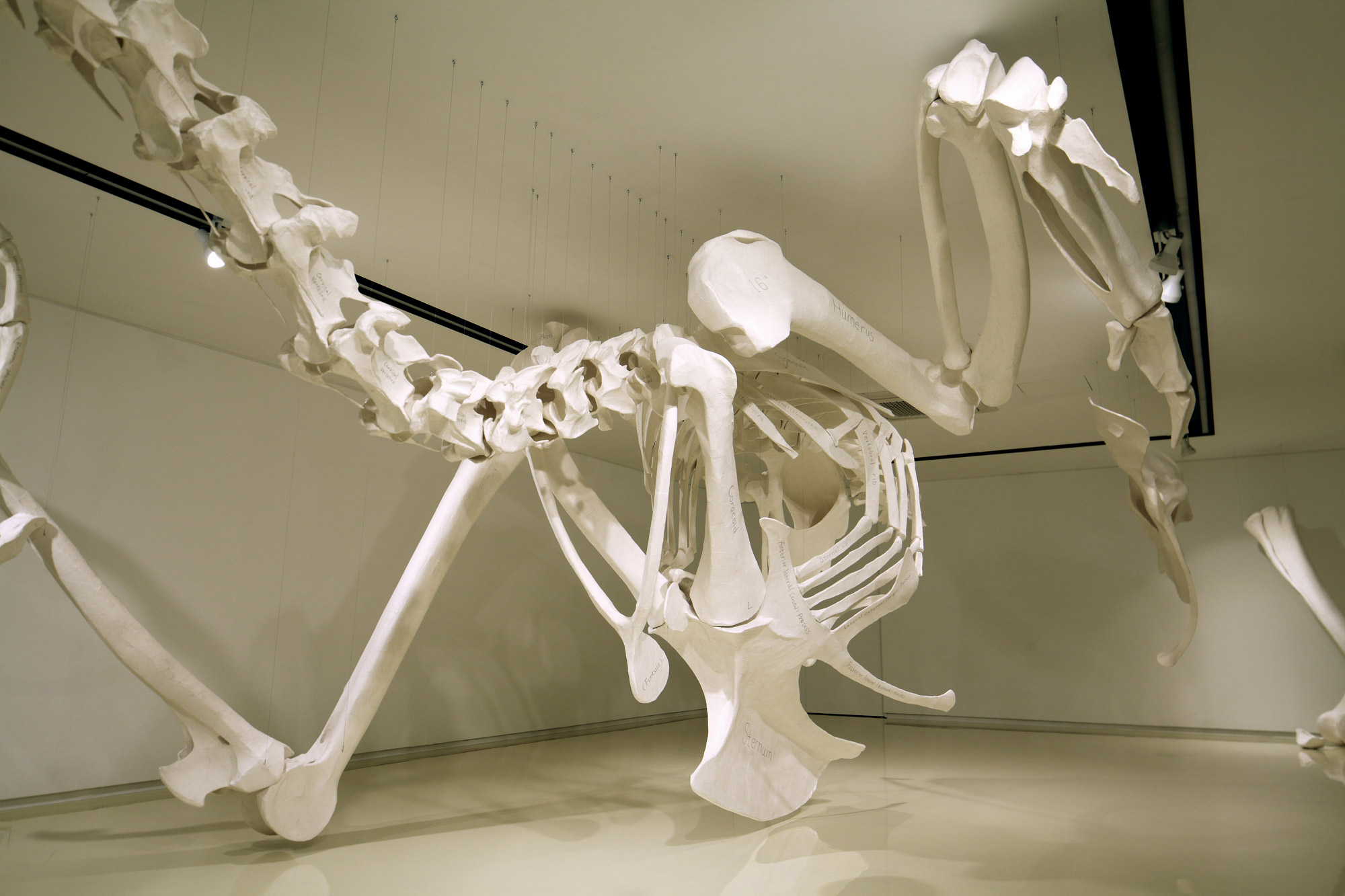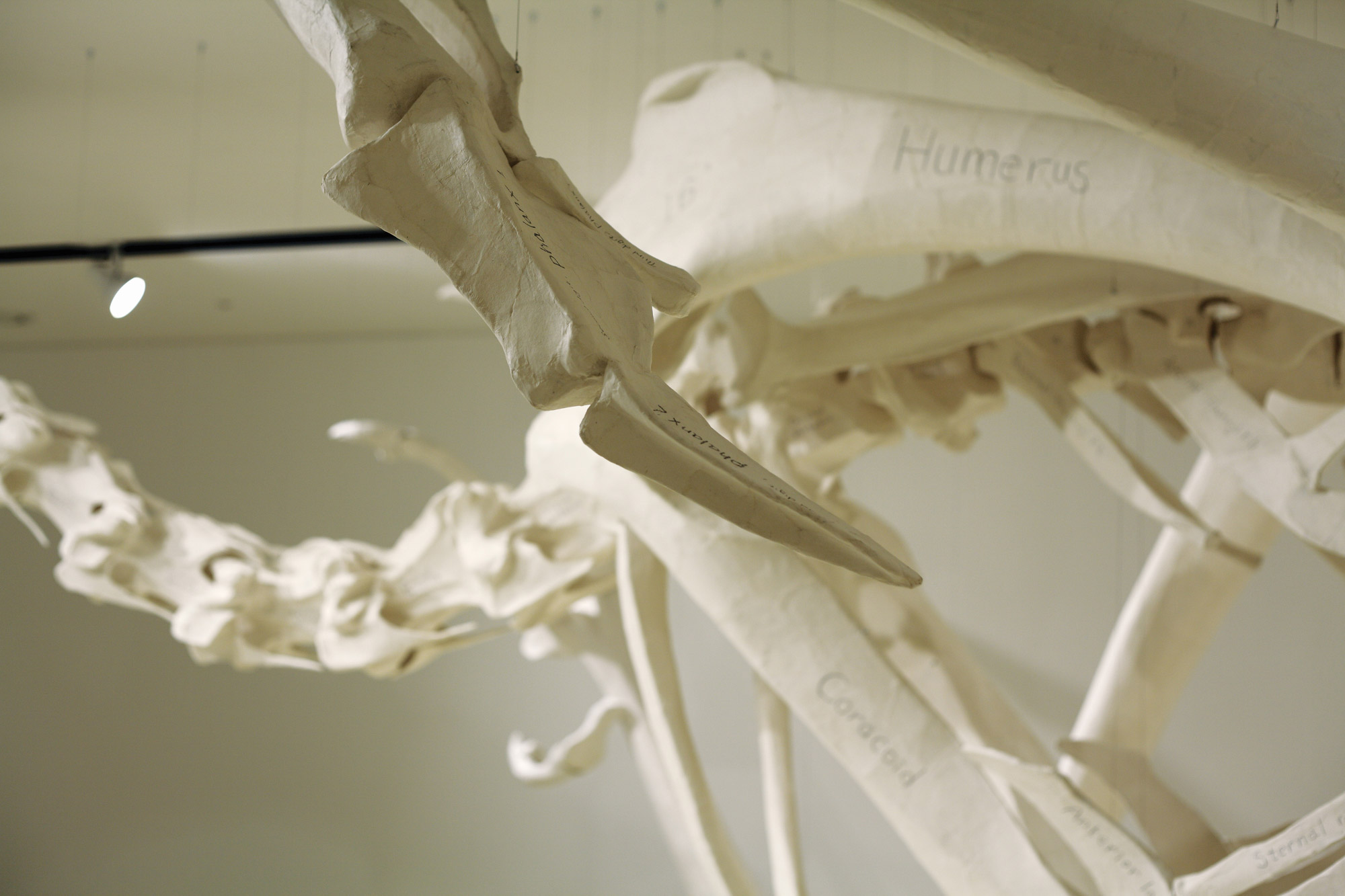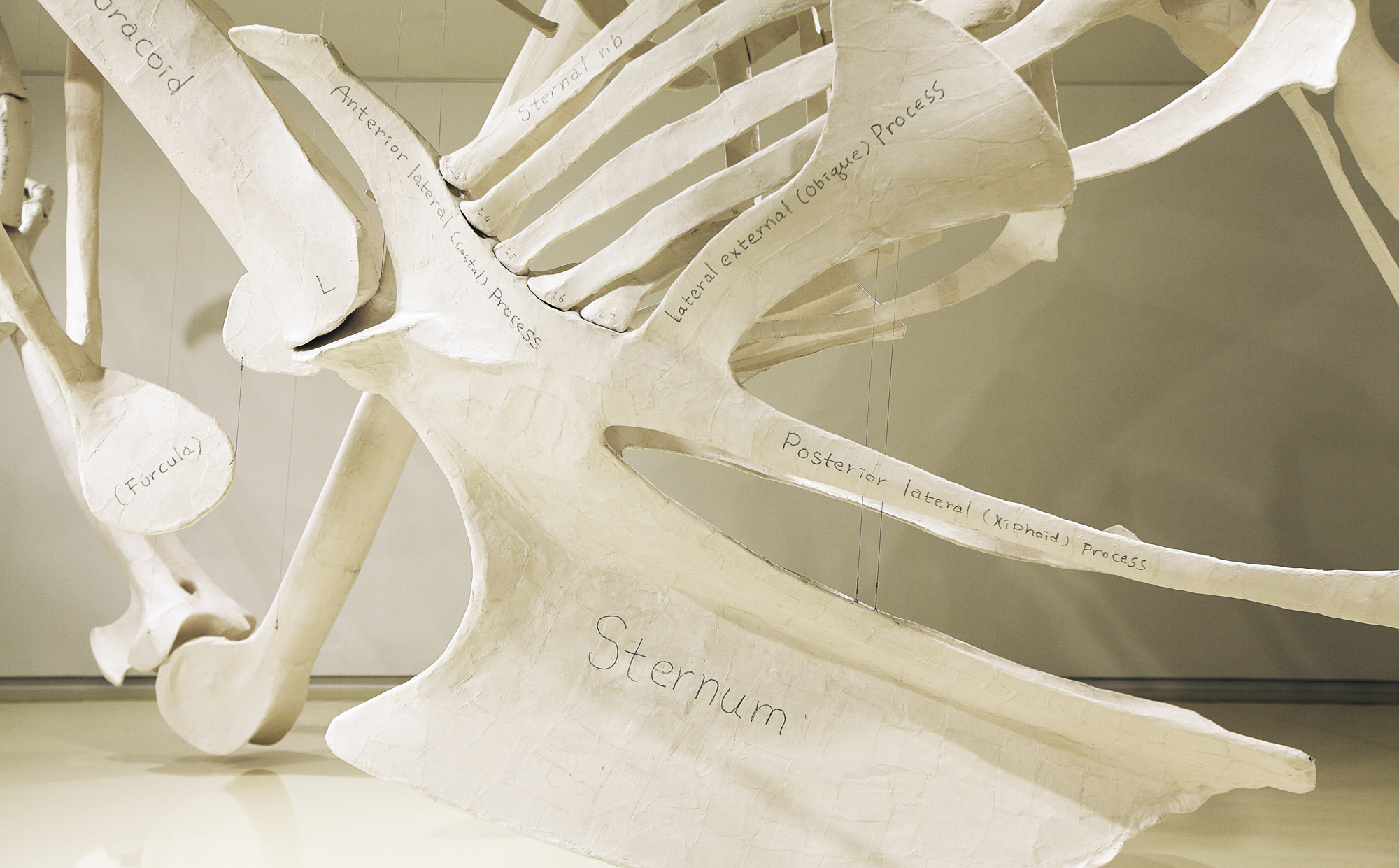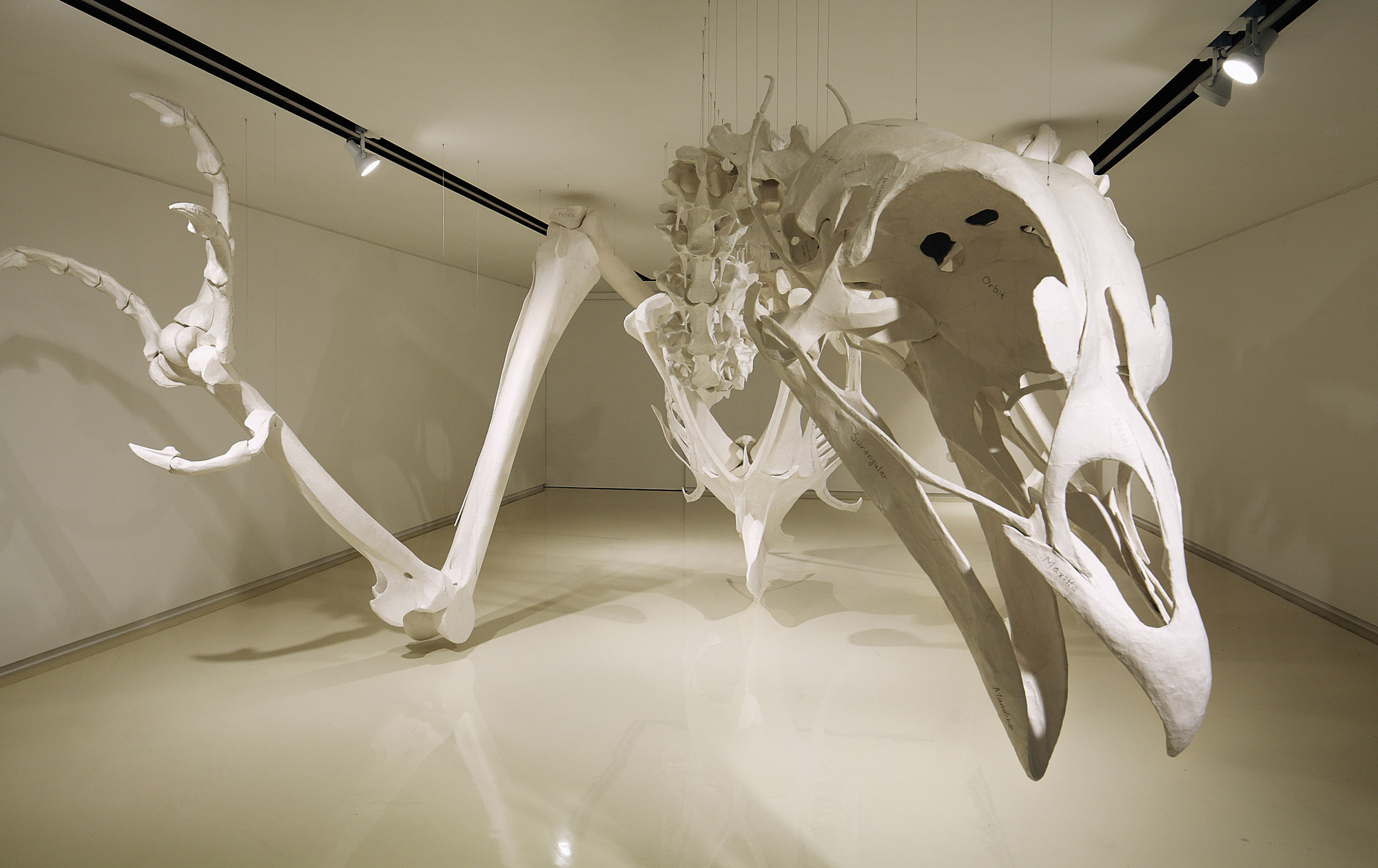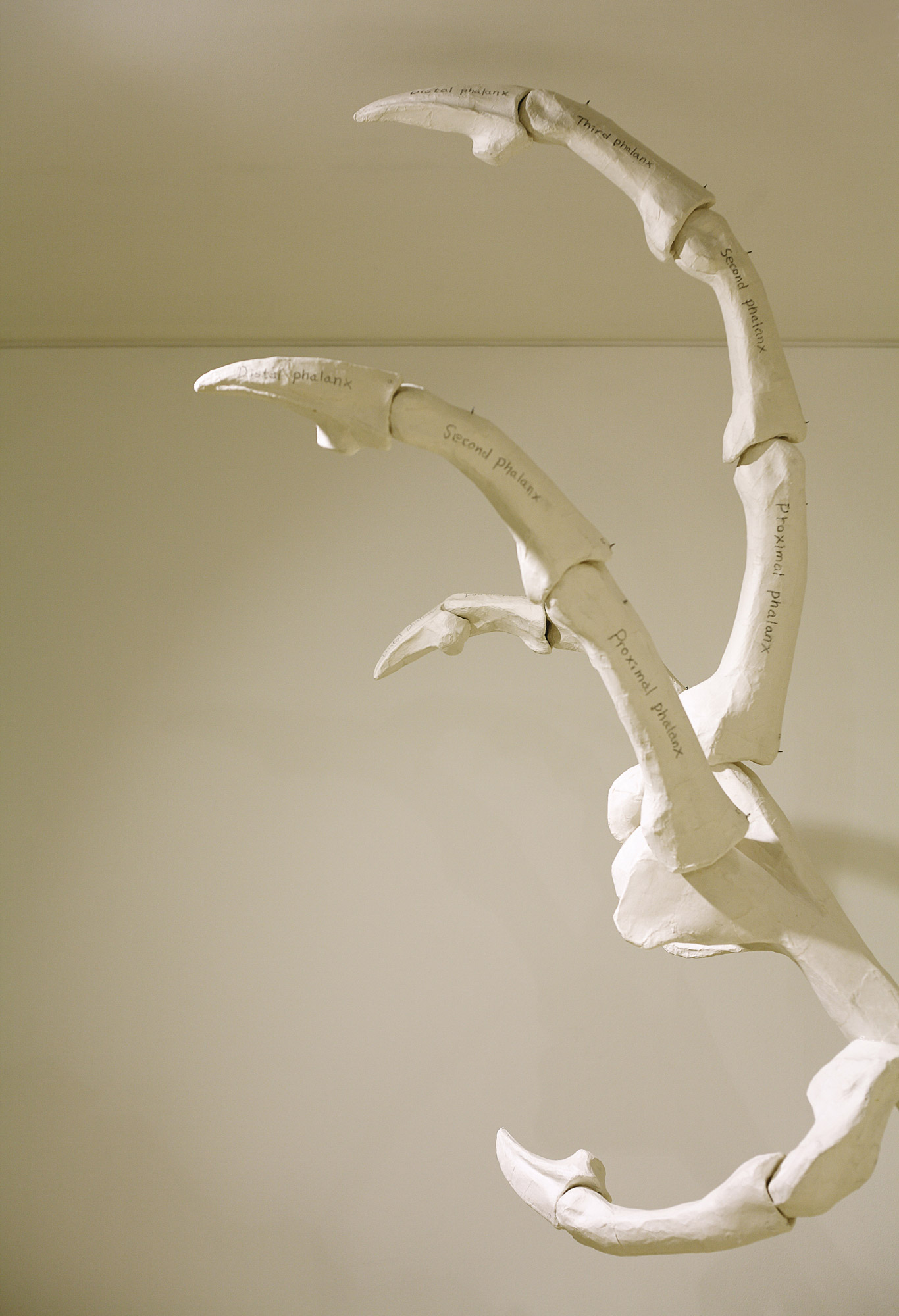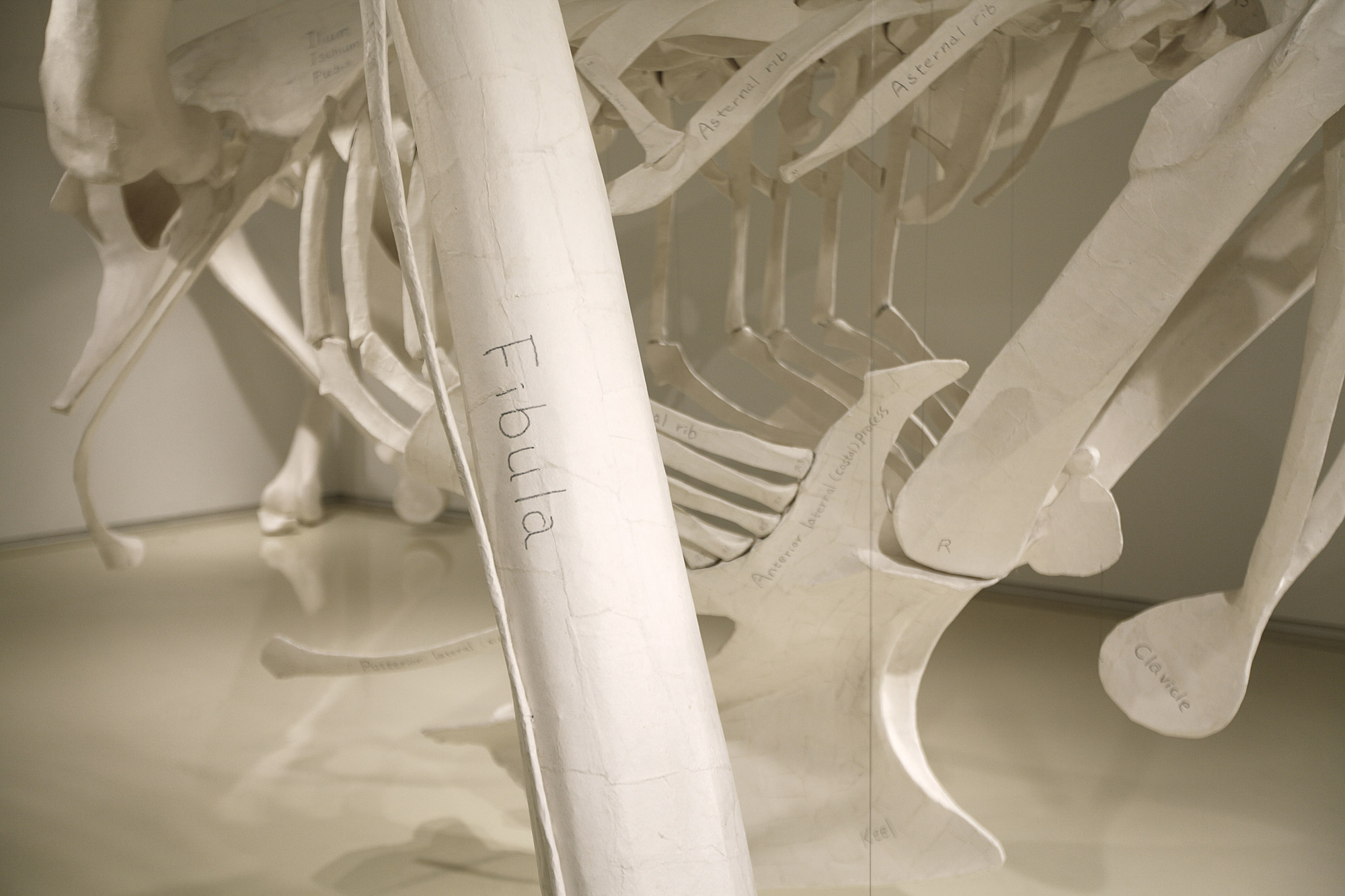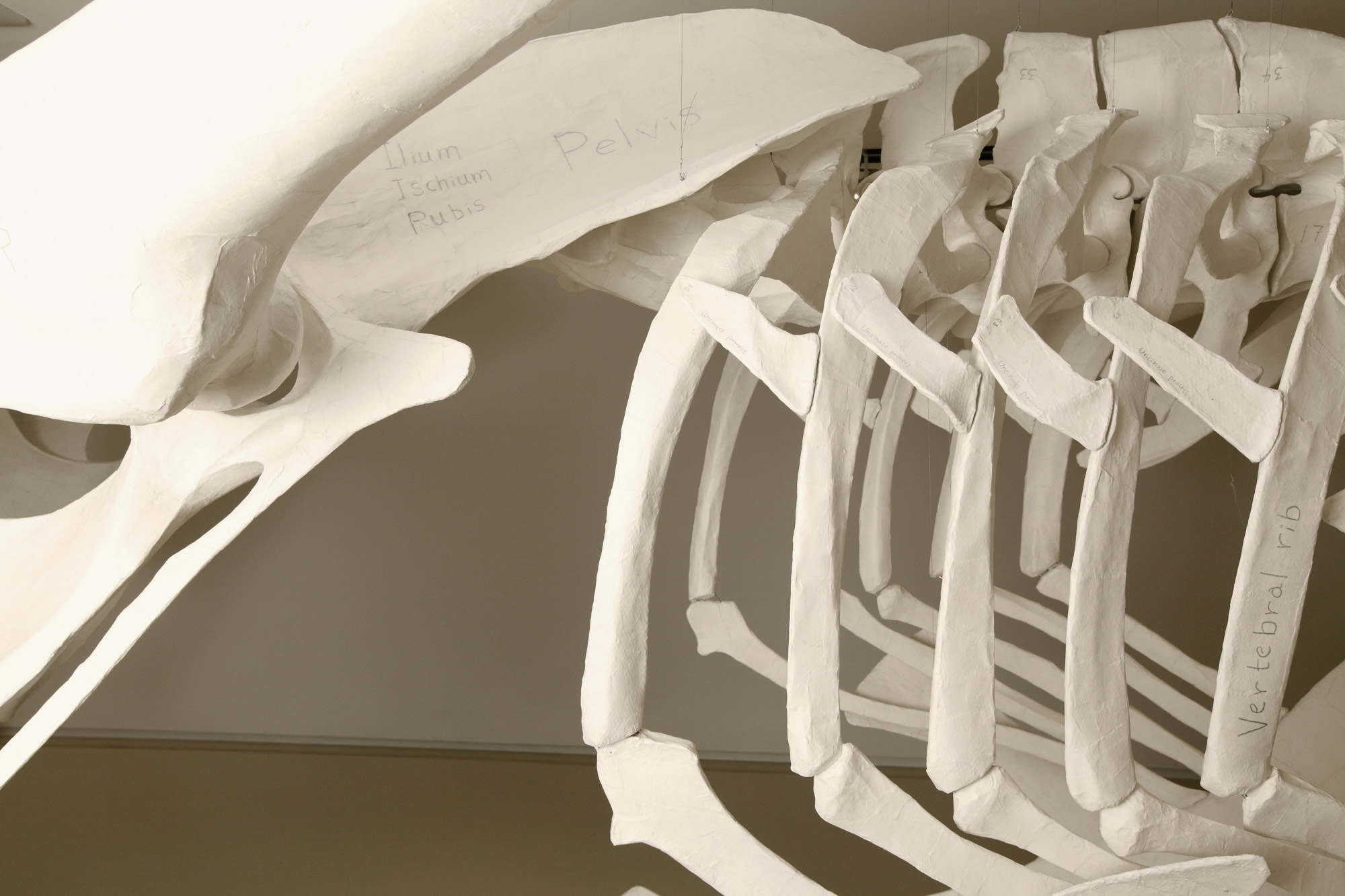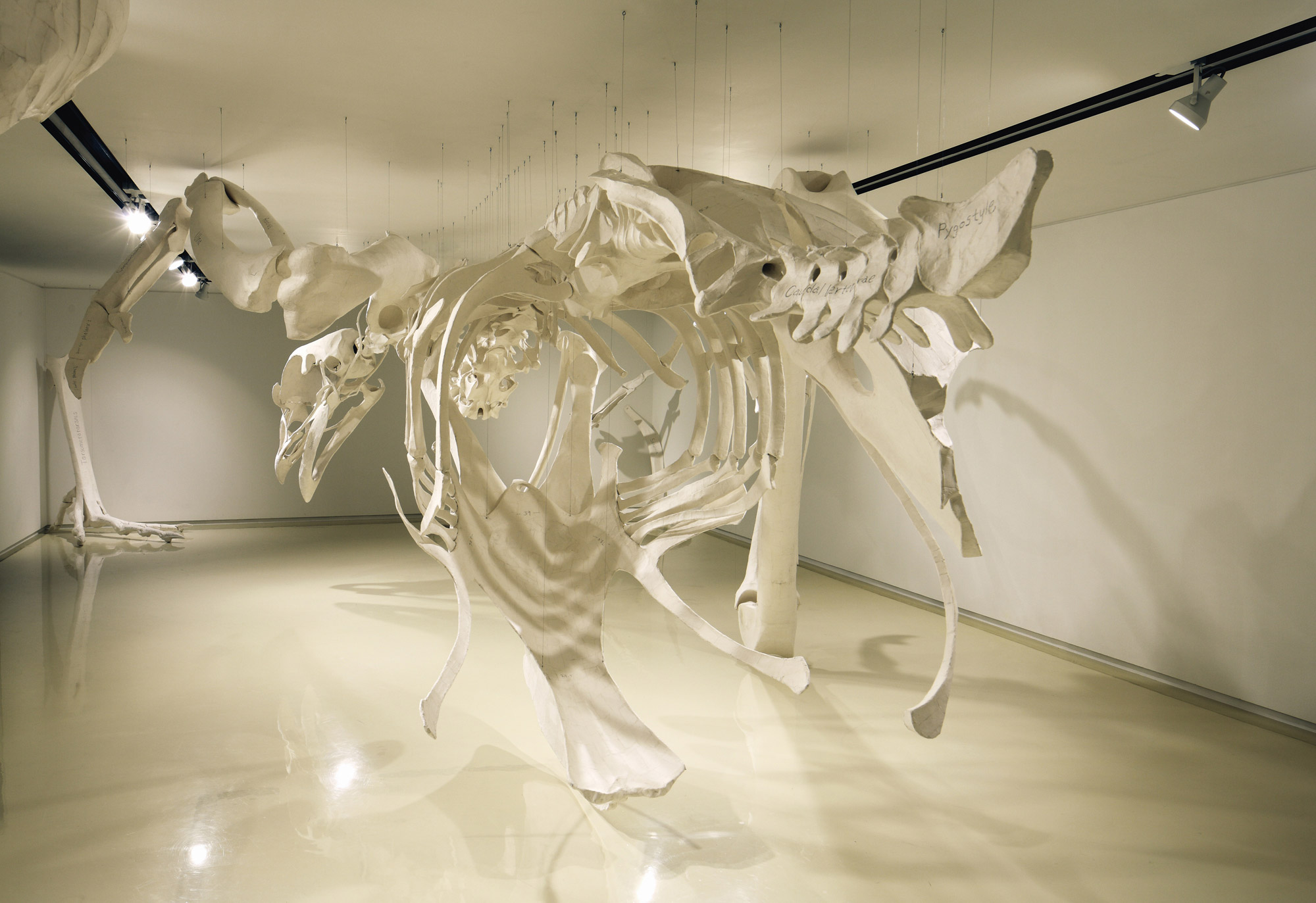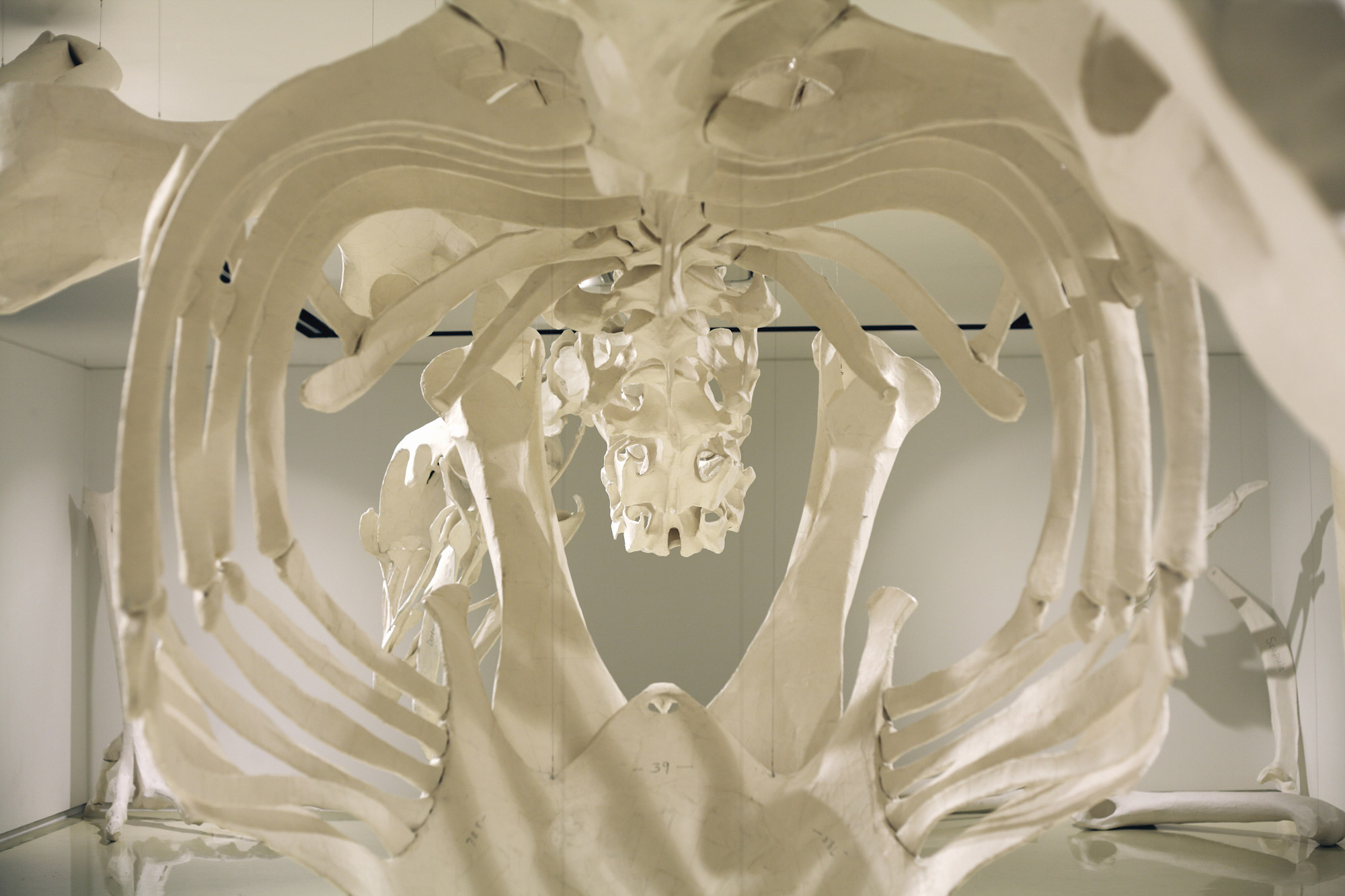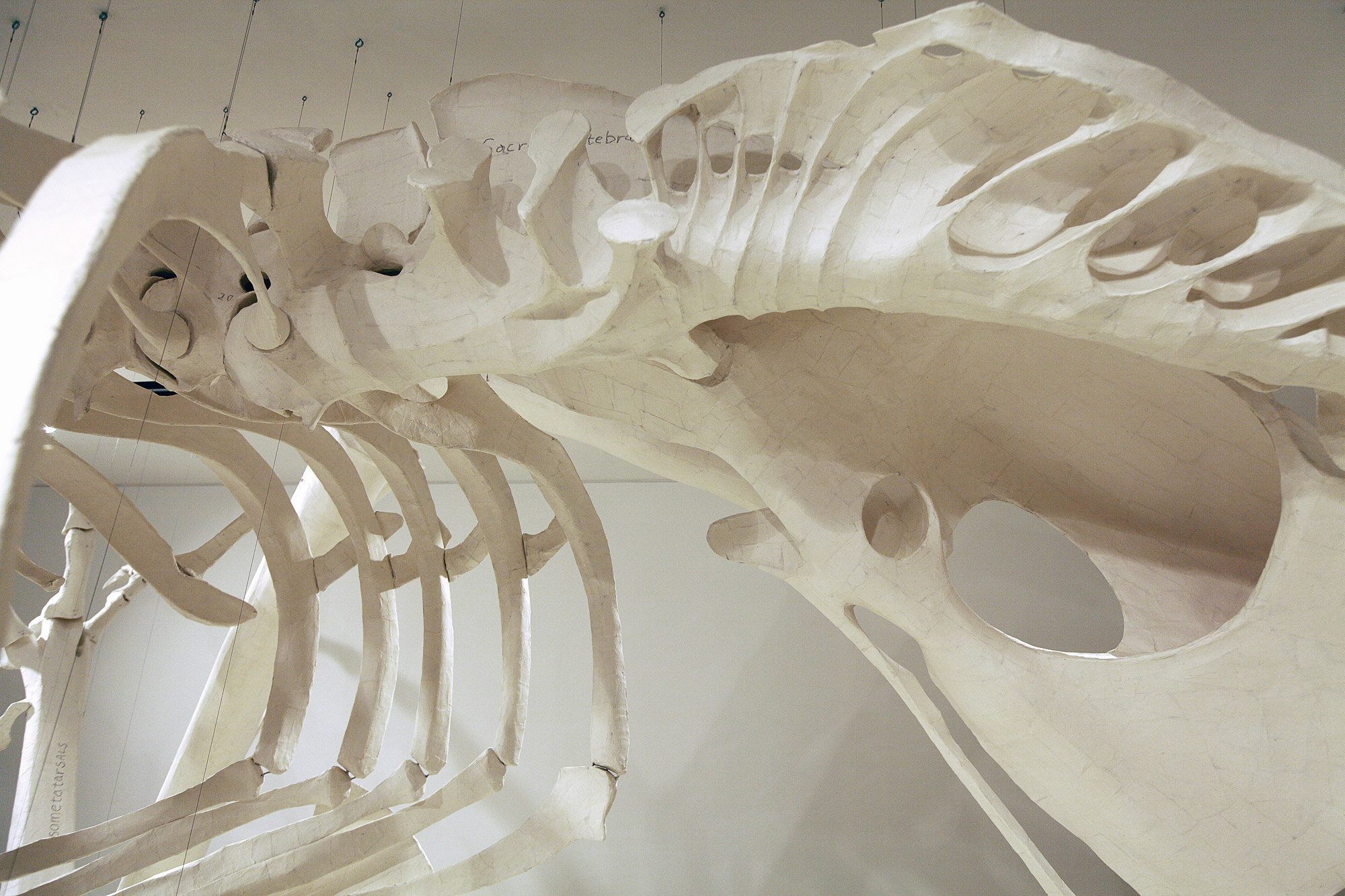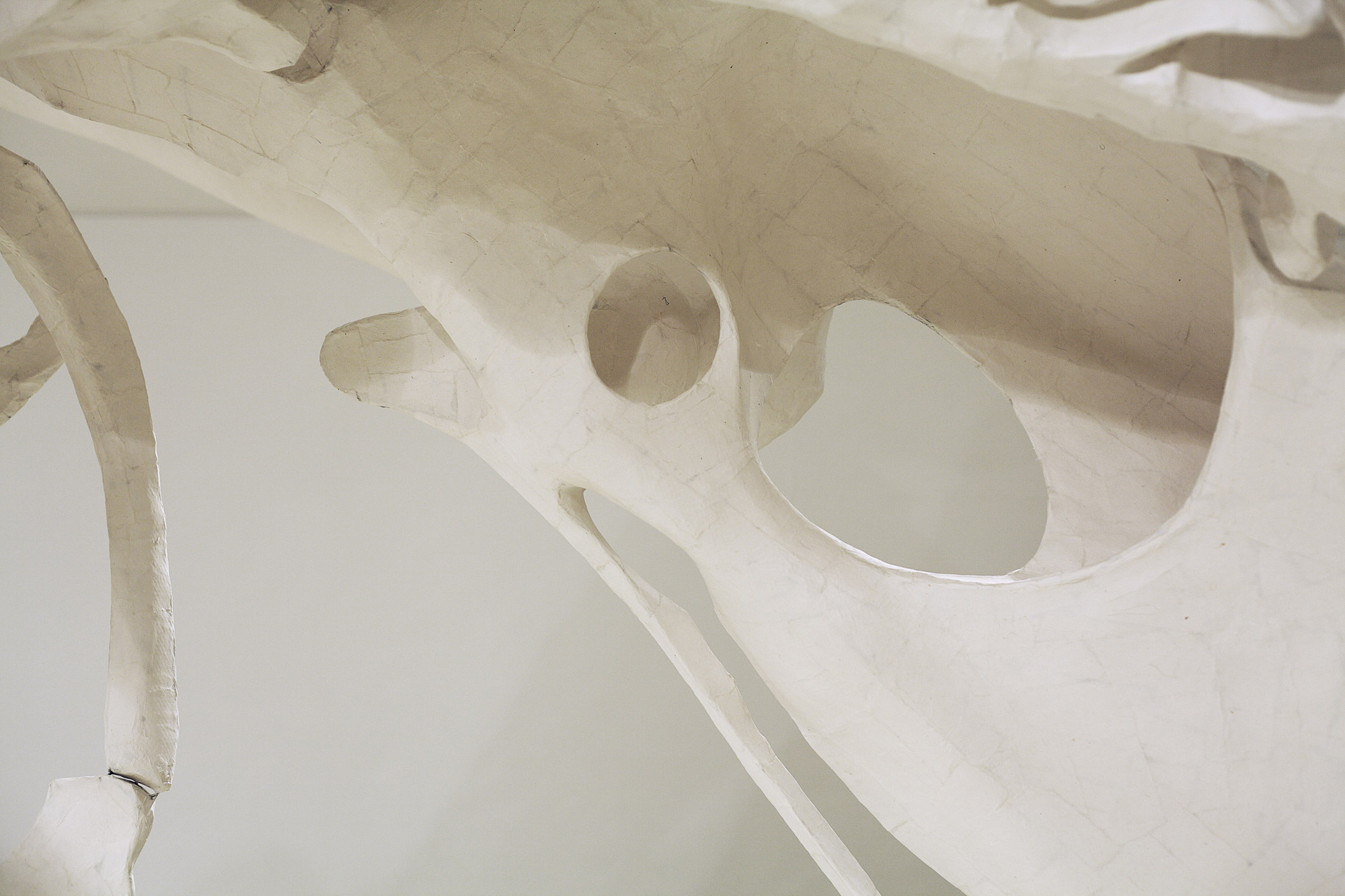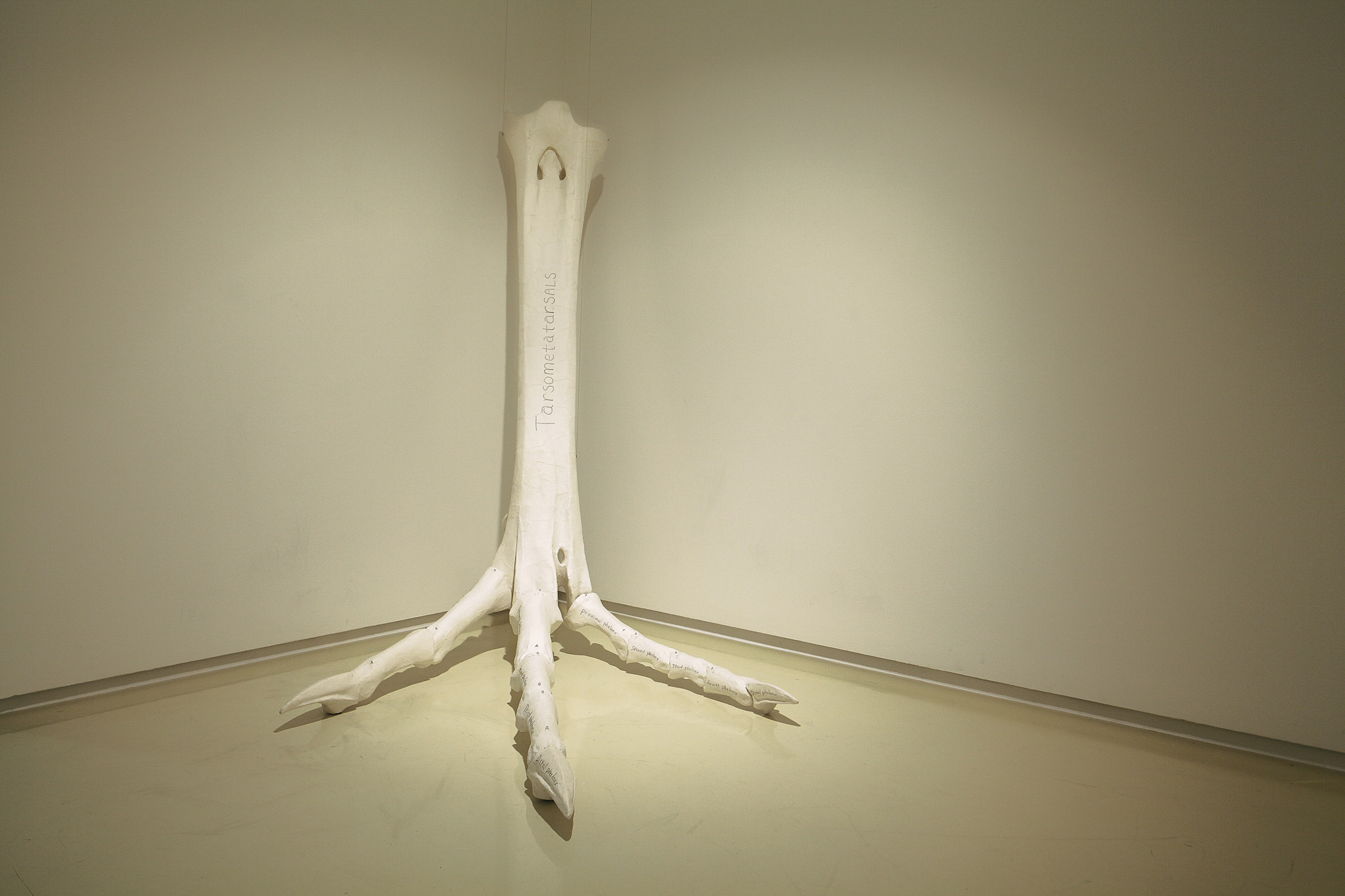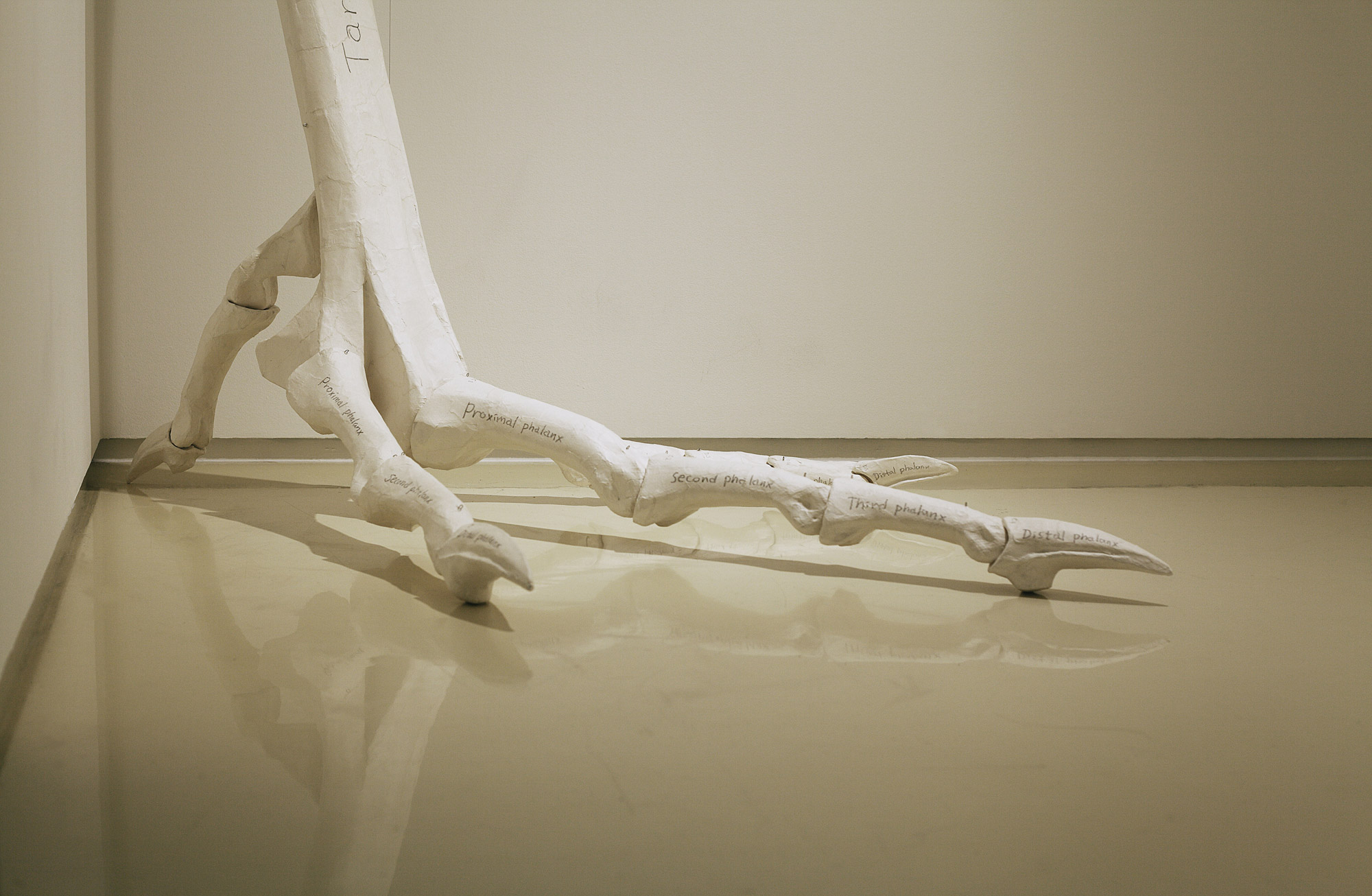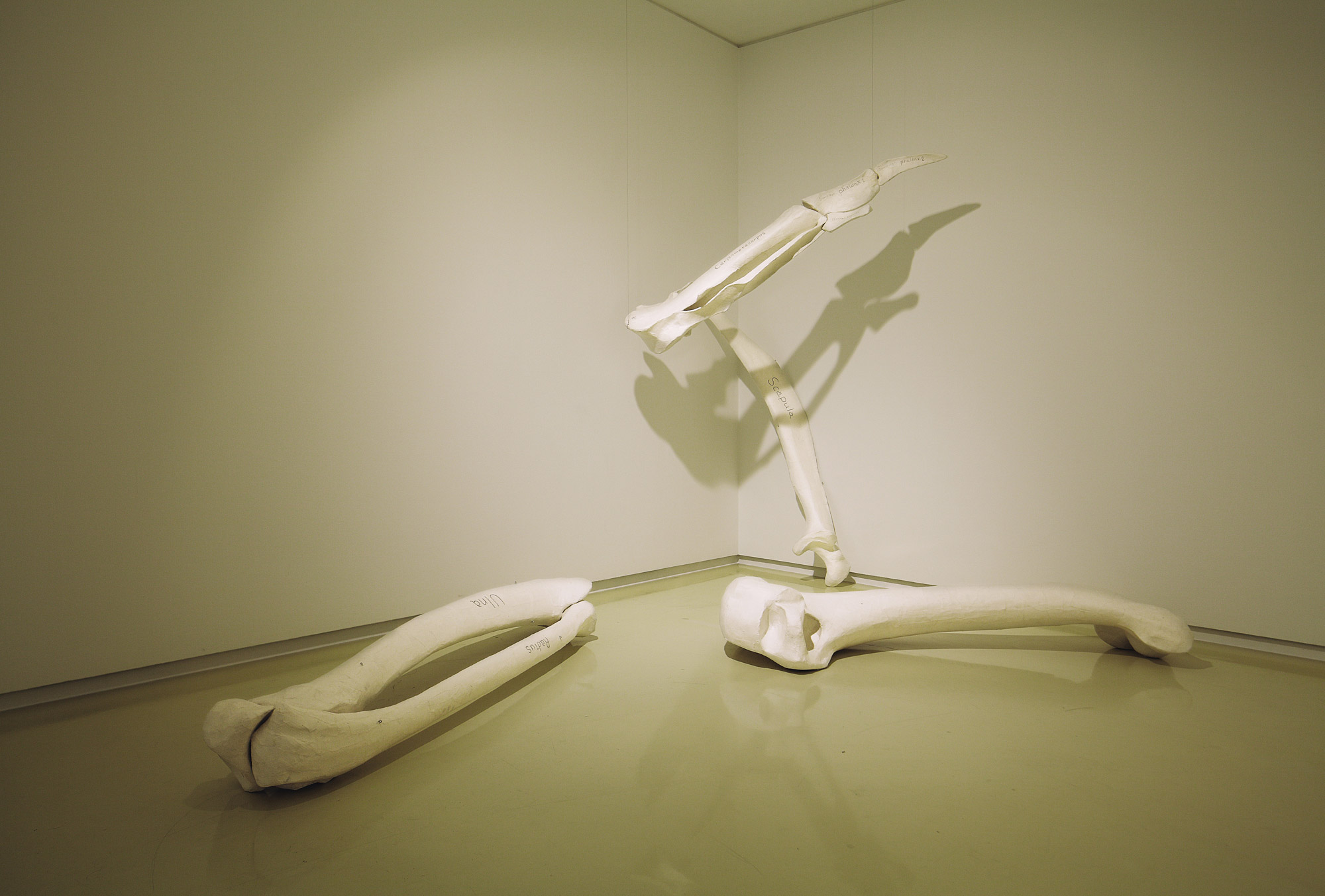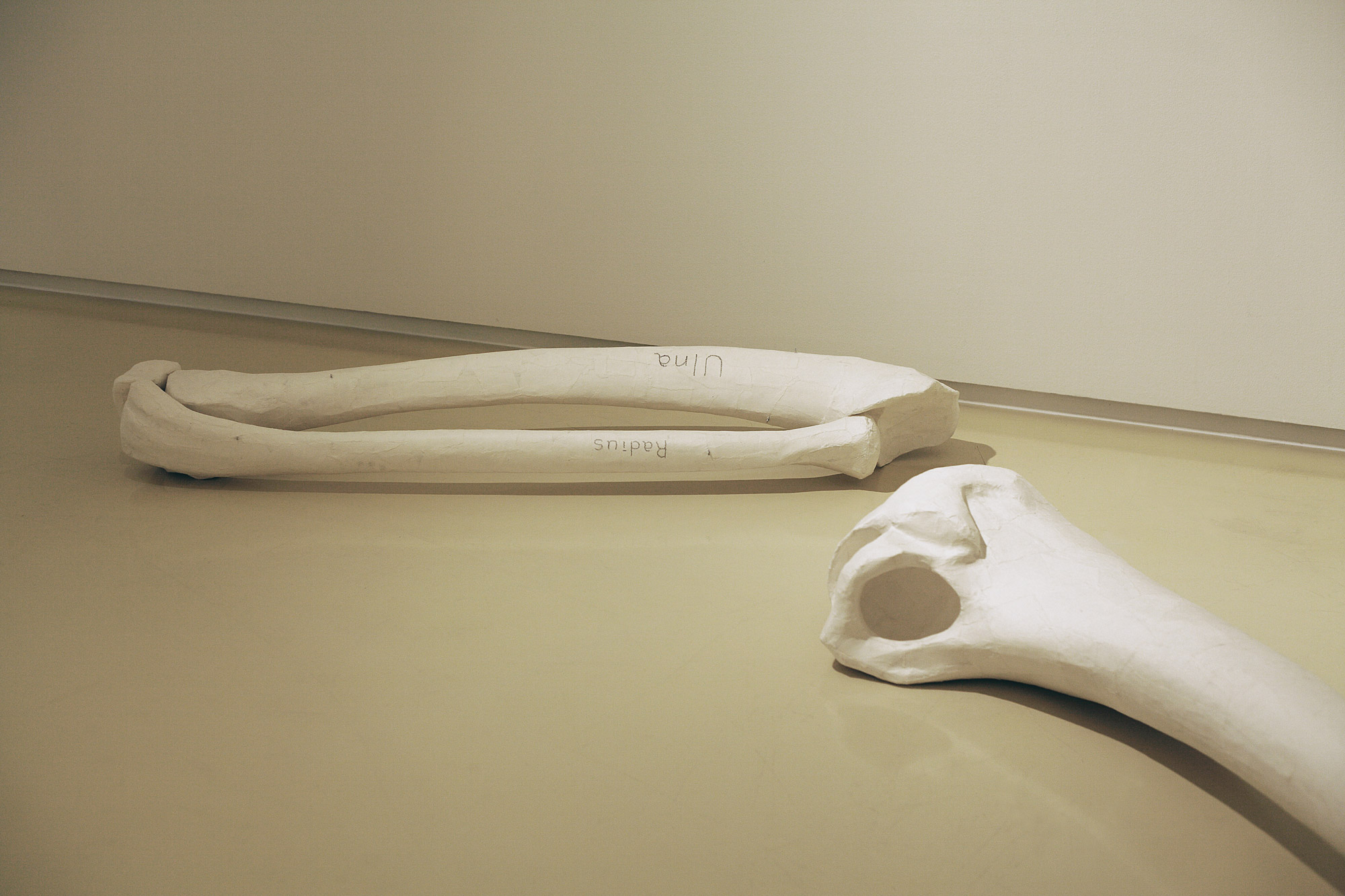Exhibitions
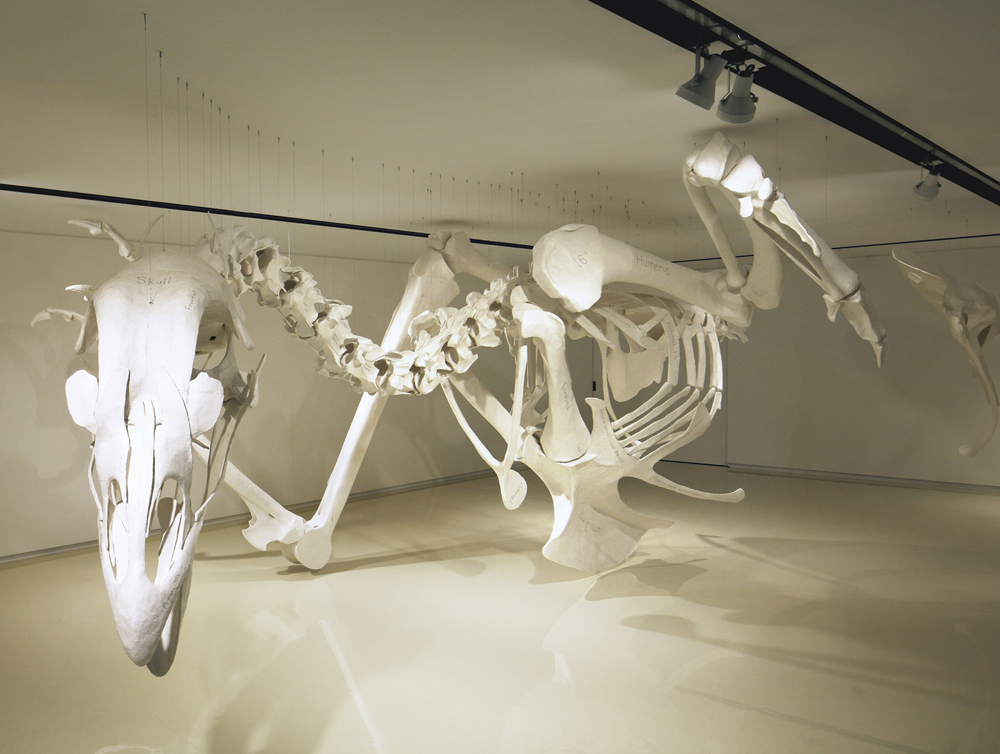
PERIGEE ARTIST #6 이형구
Gallus
2015.09.11. FRI ~
2015.11.07. SAT
우발적 상상(想像)과 완성되어가는 패러다임
신승오(페리지갤러리 디렉터)
이형구 작가는 실재와 가상을 넘나들며 인간과 동물에 대한 해부학과 생물학적 연구를 바탕으로 신체의 변형과 움직임 그리고 시각에 대한 작업을 지속적으로 해오고 있다. 그는 초기작인 신체의 일부분이 과도하게 확대되어 보이는 시각적인 신체 변형 작업들에서부터 이번 전시에서 선보이는 작품들까지 다양한 작품들을 선보이면서 작업을 진행 중이다. 따라서 그의 대표적인 시리즈서부터 이번 전시의 신작까지 훑어보면서 작품들이 어떻게 변화해 왔는지 살펴 보고자 한다. 이런 과정을 따라가다 보면 작업의 출발점에서부터 작품의 제작방식, 그리고 관객들에서 보여지는 방식까지 자연스럽게 드러날 것이며 이러한 과정들을 통해 그의 작품 세계를 읽어낼 수 있을 것이다.
제일 먼저 살펴 볼 초기의 작업은 유학시절 물을 이용한 시각적 굴절에 의해 팔과 손가락이 커져 보이게 만드는 장치로부터 시작된다. 이러한 초기의 장치들을 거쳐서 <The Objectuals>로 명명된 시리즈는 광학적인 렌즈들을 사용하여 신체의 일부분인 눈이나 입을 확대하여 낯선 인간의 얼굴을 보여준다. 그러나 이러한 작업들은 자신이 살아왔던 공간과는 다른 공간에서의 타자로서의 이질적인 모습을 드러내고자 한다기 보다는 지극히 개인적인 신체 콤플렉스의 극복에서 출발한다. 이렇게 그의 초기 작업은 주로 사람의 얼굴이나 몸이 특정 부위가 변형이 일어나면, 어떤 변화....
An Accidental Imagination and a Completed Paradigm
By Shin Seung-oh, Perigee Gallery Director
Artist Hyungkoo Lee has constantly produced works pertaining to sight, body modification, and body movement and crossed the borders of reality and imagination based on his studies on human and animal anatomy and biology. He has presented a rich variety of works including his early pieces in which body parts appear overly magnified and his pieces on display at this exhibition. I intend to examine how Lee’s works have changed by reviewing his body of work including his magnum opus along with his newer pieces. This process naturally showcases the onset of his work as well as his production and display methods in a way that allows us to better understand the world of his art.
The ideas for his early works done while studying abroad spurred from devices that make arms and fingers look magnified due to a visual refraction by water. After working with these devices, he began to portray unfamiliar faces with eyes and mouths that appeared magnified by using optical lenses in a series titled The Objectuals. These works were dr....
신승오(페리지갤러리 디렉터)
이형구 작가는 실재와 가상을 넘나들며 인간과 동물에 대한 해부학과 생물학적 연구를 바탕으로 신체의 변형과 움직임 그리고 시각에 대한 작업을 지속적으로 해오고 있다. 그는 초기작인 신체의 일부분이 과도하게 확대되어 보이는 시각적인 신체 변형 작업들에서부터 이번 전시에서 선보이는 작품들까지 다양한 작품들을 선보이면서 작업을 진행 중이다. 따라서 그의 대표적인 시리즈서부터 이번 전시의 신작까지 훑어보면서 작품들이 어떻게 변화해 왔는지 살펴 보고자 한다. 이런 과정을 따라가다 보면 작업의 출발점에서부터 작품의 제작방식, 그리고 관객들에서 보여지는 방식까지 자연스럽게 드러날 것이며 이러한 과정들을 통해 그의 작품 세계를 읽어낼 수 있을 것이다.
제일 먼저 살펴 볼 초기의 작업은 유학시절 물을 이용한 시각적 굴절에 의해 팔과 손가락이 커져 보이게 만드는 장치로부터 시작된다. 이러한 초기의 장치들을 거쳐서 <The Objectuals>로 명명된 시리즈는 광학적인 렌즈들을 사용하여 신체의 일부분인 눈이나 입을 확대하여 낯선 인간의 얼굴을 보여준다. 그러나 이러한 작업들은 자신이 살아왔던 공간과는 다른 공간에서의 타자로서의 이질적인 모습을 드러내고자 한다기 보다는 지극히 개인적인 신체 콤플렉스의 극복에서 출발한다. 이렇게 그의 초기 작업은 주로 사람의 얼굴이나 몸이 특정 부위가 변형이 일어나면, 어떤 변화를 가져 올 수 있을까? 라는 아주 단순한 명제로 출발하였다. 자신의 신체에 대한 변형을 욕망하면서 발생하는 우발적인 상상들은 작가의 작업의 가장 큰 바탕이 된다. 그리고 이렇게 출발한 작품 제작의 방식은 과학적인 실험 방식과 유사하다. 우선 변형시키고자 하는 대상을 꼼꼼히 관찰하고 분석하고 연구하는 과정을 거친다. 이러한 작업 방식은 이후의 작업들에서 사람뿐만이 아니라 여러 동물들의 신체 구조를 연구하는 데까지 확장되며, 그의 작업에서 계속해서 중요한 부분으로 자리잡고 있다. 그리고 연구와 분석 이후에는 실제로 임상실험을 하듯이 작품으로서 실체화 시키는데 머무르지 않고 작가가 자신의 몸에 장착하고 실제의 공간에 등장한다.
<The Objectuals>가 내면의 욕망을 외형적인 변형으로 표출되었다면, <ANIMATUS> 시리즈는 새로운 경향으로 보여준다. <ANIMATUS>는 ‘생명이 있는’ 이라는 라틴어에서 작가가 차용하였고 그가 만들어 내는 형식적으로는 뼈들로만 이루어진 정체를 알 수 없는 동물들의 학명으로 작가가 명명하였다. 이 작품들을 자세히 살펴 보면 이들은 모두 우리에게 익숙한 동물을 의인화한 애니메이션의 주인공들이다. 이러한 작업은 세상에 실존하지 않는 가상의 평면적인 존재를 입체로 구성하는 데에 멈추지 않고, 골격이라는 내부에서 외형을 역추적해서 만들어 냄으로써 또 다른 새로운 시각적 즐거움을 준다. 설정은 이렇다. 어디에선가 뼈를 발견한다. 그리고 이 뼈들을 하나하나 다시 조립하여 보니 과장된 눈, 사람처럼 직립해 있는 척추, 그리고 손처럼 사용되는 앞 발이 있는 동물이 된다. 그리고 이러한 특징적인 요소들은 다른 설명이 필요 없이 우리가 알고 있는 애니메이션의 주인공들임을 알아차릴 수 있다. 이러한 표피 내부의 골격의 형태를 통해 그 외형을 상상하게 만드는 <ANIMATUS> 작업은 입체 작업으로서만 나타나는 것이 아니라 실험실을 만들어 실제로 발굴되어 연구하고 실험하는 공간을 재현하기도 한다. 이 두 시리즈에서는 계속해서 <HK LAB>과 <ANIMATUS LAB> 이라는 실험실이 등장한다. 그러나 실험실은 단순히 그의 작업들을 진짜 과학연구로 보이도록 위장을 하기 위한 방식으로 사용되는 것이 아니다. 이는 기존의 과학계 제도권 안에서 이루어지는 연구에서 벗어나 자유로운 접근을 통해 기존의 장애물들을 제거하고 새로운 결과를 보여주기 위한 작가의 의도를 드러내는 상징으로 나타난다. 이는 작가가 자신의 작업을 설명하는 유사과학 다시 말해 공인된 라이선스가 없는 사람이 만들어내는 가설이 기존의 견고한 패러다임 안에서 인정받지 못한다는 폐쇄성과 인식의 한계에 균열을 만들고 새로운 관점을 제시하는 의도로 사용된다.
이후에 나타나는 작업들을 간단히 살펴보면 <Eye Trace>는 만약에 사람이 다른 동물과 같은 시각 구조를 가지고 있다면 세상이 어떻게 보이고 행동하게 되는지에 대한 행동 유형학적인 작업이다. 동물의 시각을 체험할 수 있는 다양한 도구들을 전시하고 이를 실제로 착용하여 동작들을 실행하는데, 이는 매우 어색하고 불편해 보이는 구조를 가진다. <Face Trace> 작업에서는 작가자신의 얼굴을 관상을 보는 법에 따라 다른 인종의 골격과 뒤섞어 변화시켜 특이한 골상을 만들어 내었다. 가장 최근의 <MEASURE>전시에서는 말과 똑같이 보행을 할 수 있게 해주는 도구와 그것을 연구한 드로잉들 그리고 말처럼 걷기 위해 만들어진 연습도구들을 선보였었다. 이와 같이 이형구는 지속적으로 사람이나 동물의 외형과 신체구조 그리고 움직임에 관심을 가지고 있다.
그렇다면 이제는 이번 전시의 작품을 살펴보자. 전시장에는 큰 골격들을 가진 생명체가 전시되어 있다. 그러나 우리는 쉽사리 이 생명체가 어떤 것인지 파악하기 힘들다. 일단 외형을 살펴보면 그 존재를 밝혀 내기에 앞서 이 거대한 골격은 조형적으로 아름다우며, 그 구조를 파악하여 뼈 조각 하나 하나를 이어 붙이고 뼈 곳곳에 써 넣은 명칭들은 작가의 연구의 흔적을 보여주고 있다. 과연 이 생명체는 무엇일까? 사실 <Gallus>라는 전시 제목이 그 정체를 밝혀주고 있다. <Gallus>는 닭의 학명으로 이 거대한 생명체는 공룡도 아니고 애니메이션의 주인공도 아닌 바로 닭이다. 닭은 우리 생활 속에서 가장 쉽게 접할 수 있어 그 골격을 가장 쉽게 시각적으로 확인 할 수 있는 동물이다. 하지만 우리는 이 조그마한 뼈에는 관심을 가지지 않기 때문에 자주 접하지만 닭의 골격에 대해 생소 할 수밖에 없다. 게다가 작가는 이를 닭이라고 상상할 수 없는 거대한 사이즈의 골격으로 확대하여 복원함으로써 우리는 이를 공룡으로 착각하거나 그의 이전 작업에서 이미 등장한 만화캐릭터를 더듬어 보게 된다. 그리고 닭이라는 것을 알고 나서도 쉽게 닭이라고 인식하기 어렵다. 외형적으로는 <ANIMATUS>와 비슷해 보이지만 <Gallus>의 의미 구조는 그와 다르게 단순하다. 우선 닭은 <ANIMATUS>와는 달리 실제로 존재하는 동물이며, 크기만 다를 뿐 실제의 뼈의 구성은 똑같다. 그리고 작가가 설정해 놓은 이야기 장치 또한 복잡하지 않다. 단지 작가의 우발적인 관심으로 인해 진지하게 닭의 골격을 관찰하고 연구의 대상으로 삼았을 뿐이다. 좀더 자세히 이야기하자면 작가는 일상적으로 닭을 먹을 때마다 남겨진 뼈를 맞추어 보면서 흥미를 느끼고 이 작은 골격에서 시각적 즐거움을 발견했다. 그리고 우리가 흔하게 보는 일상적인 동물의 골격을 확대하면 과연 우리는 그것을 우리가 정확하게 인식 할 수 있을까? 라는 우발적인 생각을 구체화 시킨 것이다. 하지만 우리는 이 단순한 발상만으로도 우리 인식을 새롭게 자극하는 변화를 느끼게 된다. 이러한 우발적인 상상이 이형구가 이번 전시에서 현실의 것을 가상의 것으로 가상의 것을 실제의 것으로 그 경계를 계속해서 순환시키며 다양한 층위를 자유자재로 조율하는 키 포인트라는 것을 보여주는 대목이다. 그리고 이 단순한 시작점과 그가 대상을 바라보는 관심과 태도가 그의 패러다임을 완성해가는 중요한 요소로 작용한다.
이형구는 지금까지 이어온 작업들에서 공통적으로 인간에게 필요한 실용적인 변형을 위해 연구하기 보다는 인간의 관심을 끌지 못하고, 쓸모 없고 거추장스러운 것들을 지속적으로 실험하고 있다. 그렇다면 그는 왜 인간의 몸이나 골격, 다른 동물의 시선이나 움직임 등 관심을 보이는 것일까? 생물학에서 인간에 의해서 규정지어지는 외형적 아름다움의 기준이나 육종되어 만들어지는 동식물은 인간의 특정한 취향을 위한 목적성을 가진 변형일 수 밖에 없다. 목적성을 띤 고정된 시각은 특정한 지점에만 집중하게 됨으로 스스로를 한계 짓는다. 그리고 필요와 불필요 사이에서 탈락이 결정된다. 이러한 기준은 맹목적이고 고착화되어 위험하다. 특히 과학과 같은 합리적이고 객관적으로 보이는 분야는 특정한 패러다임 안에서 성장하고 이를 발전시키고 군림하며, 새로운 이론들을 편견을 가지고 배척한다. 그러나 토마스 쿤이 이야기한 것처럼 패러다임은 언젠가 새로운 패러다임에 의해 한계점에 다다르게 되며, 이러한 변화는 연속적인 것이 아니라 완전히 다른 패러다임에게 자리를 양보하는 하나의 끝과 새로운 시작으로 나타난다. 따라서 이형구는 결국 이러한 패러다임의 순환구조에서 우리에게 중요한 것은 절대적인 패러다임이 아니라 어떤 대상이나 현상을 새롭게 바라보는 언제나 자유로운 시각과 태도이며, 각자 자신만의 패러다임이 존재 할 때 풍요로워 진다는 것을 보여준다. 이렇게 그의 작업은 계속해서 다양한 연구들이 쌓여나가면서 더 이상 사이비 과학이 아니라 새로운 관점들을 만들어 내기 위한 지점으로 천천히 이동하면서, 그 만의 패러다임을 형성해 나가고 있다. 그리고 이 새로운 패러다임이 성장하기 위해서는 관객들과의 공유와 확산이 중요하다. 따라서 이형구가 전시를 통해 보여주는 작품들과 자기 스스로 도구를 장착하고 벌이는 즉흥적인 퍼포먼스는 모두 작가가 보여주는 새로운 인식체계와 구조를 같이 경험하면서 자신과의 교감을 이끌어 내기 위한 것으로 보인다.
정리해 보자면 이형구가 작업들을 통해 관객들과 공유하고자 하는 것은 결국 우리의 신체나 인식이라는 물리적인 변화와 시각적인 변화는 서로에게 영향을 주며, 지속적으로 반복해서 나타난다는 것이다. 그리고 이러한 것들은 기존에 우리가 가지고 있는 고정된 인식의 틀에서 경계를 벗어날 때 명확하게 그 존재를 드러낸다. 따라서 그의 다양한 층위를 드러내는 작품들이 시간이 지날 수록 쌓여가면서 우리는 그의 이야기를 따라 점점 새로운 방향으로 자신도 모르게 변해 가고 있다. 이렇게 보면 그는 단순히 외형적인 변형이나 도구를 통해 표피적이고 순간적인 변형과 동물의 움직임을 흉내 내는 것이 아니라 우리의 신체적 구조와 감각으로는 인지하기 힘든 것들을 작업들을 통해 새로운 시각을 재구성함으로써 우리의 감각을 재 설정한다고 볼 수 있다. 이러한 작가가 만들어 내는 작품들에 의해 새로운 시각이 받아들여지고 익숙해지면, 그 뒤로는 도처에서 이와 유사한 것들이 발견되며 우리의 인식의 지평은 넓어진다. 결국 앞으로도 계속 될 이 여정은 작가의 우발적인 상상을 통해 시작되어 그 안에서 일반적인 것들을 도출해내고, 이를 다시 외부에 대한 관찰을 통해 일시적인 시각적 자극에서 멈추는 것이 아니라 다시 영원한 것으로 계속해서 다듬어 나가는 것이라고 볼 수 있다. 다시 말하면 그는 특수한 것에서 일반적인 것을 보고, 일시적인 것에서 영원한 것을 찾아내고 있다. 이렇게 이형구는 우발적이고 우연적으로 시작한 작업을 자신만의 연구 방법을 통해 하나의 패러다임을 만들어 가고 있으며, 우리가 가지고 있는 기존의 인식의 층위를 확장할 수 있게 해준다. 이러한 점들이 그가 새로운 작업을 선보일 때 마다 우리가 조금씩 변화하고 있다는 증거이며, 앞으로 그의 작업이 어떤 패러다임을 완성시킬지 기대하게 하는 이유일 것이다.
By Shin Seung-oh, Perigee Gallery Director
Artist Hyungkoo Lee has constantly produced works pertaining to sight, body modification, and body movement and crossed the borders of reality and imagination based on his studies on human and animal anatomy and biology. He has presented a rich variety of works including his early pieces in which body parts appear overly magnified and his pieces on display at this exhibition. I intend to examine how Lee’s works have changed by reviewing his body of work including his magnum opus along with his newer pieces. This process naturally showcases the onset of his work as well as his production and display methods in a way that allows us to better understand the world of his art.
The ideas for his early works done while studying abroad spurred from devices that make arms and fingers look magnified due to a visual refraction by water. After working with these devices, he began to portray unfamiliar faces with eyes and mouths that appeared magnified by using optical lenses in a series titled The Objectuals. These works were driven by his wish to overcome his own extremely personal complex about the body, not by an intention to regard anything with a foreign appearance in an area different from where he has lived as being strange. His early work was thus inspired from his wonderings about what sort of change occurs when a specific part of the face or body is modified. An accidental imagination stimulated by his desire to modify his body has served as the most solid foundation for his work. This method of creation is quite similar to that of scientific experimentation. First, he goes through a process of carefully observing, analyzing, and studying the object he intends to modify. This work method has expanded to include researching the physical structures of numerous animals, something which has become a crucial element in his work. As if performing a clinical test after study and analysis, he installs such devices on his body or brings them to a real space, going beyond the stage of applying them to his work.
While The Objectuals is a series that represents one’s inner desire through outer modification, the series Animatus displays this in a new direction. The term “Animatus” was appropriated from the Latin word meaning “to bring life” which he then coined as a scientific term referring to unidentified skeletal animals. Upon closer examination of these works, we come to realize that they are all animation characters that have been personified from animals familiar to us. This work is not just a mere manifestation of imaginary two-dimensional beings as three-dimensional beings as it manages to bring about a new sort of visual pleasure through a backwards tracing of skeletons from their insides to their outsides.
Lee discovers bones and assembles them together one by one, making an animal with exaggerated eyes, a straightly erected spine like that of a human, and forelegs that work like hands. These distinctive elements imply that the animal is without a doubt one of the animation characters we know of. The Animatus series is not only presented as a collection of three-dimensional works that encourages viewers to reassess outer appearances through the skeletons that exist under our outer layer of skin but also as objects in a laboratory where they are excavated, researched, and experimented on. Laboratories such as HK Lab and Animatus Lab are present in the series. The laboratories are not meant to disguise his work as a real scientific study but are adopted as a symbol that unveils his intention to bring forth a new result by removing preexisting obstacles through unrestricted approaches, escaping from the research that has been conducted in the established science scene. They are also employed with the intent to overcome the closed world of science in which a hypothesis advocated by an unauthorized person cannot present a new perspective or achieve recognition in a preexisting solid framework and the limits of perception.
To take a brief look at his works produced since then, Eye Trace is an ethological work on how the world would be seen and how humans would act if humans had the same visual structure as that of animals. He displays various devices with which viewers can experience an animal’s sense of sight. The viewers wear the devices that appear very clumsy and inconvenient and do whatever they want to do. Face Trace creates unique physiognomy through a mix of the artist’s own face with those of other races. He brought a device that enables people to walk like a horse and the drawings he made as a result of studying the device to his latest exhibition, Measure. As can be inferred, Lee has always been interested in men and animals’ outer appearances, body structures, and movements.
From here on, let’s review the works on display at this exhibition. On show are life forms with large skeletons that are indiscernible as a whole. In terms of outer appearance, the huge skeletons are beautiful. Lee grasped their structure and attached names to each bone after putting them together one by one. This work shows the marks of his research. What on earth is this life form? The exhibition title Gallus tells viewers what it is. The term “Gallus” is the scientific name for a chicken or rooster so this gargantuan life form is not a dinosaur nor an animation character but an actual rooster. As we often see chickens in our everyday life, we can easily confirm its skeletal structure. Yet as we are indifferent to its small skeleton, we are unfamiliar with it. As the artist restored and enlarged its skeleton to such an enormous size that makes it hard for us to imagine as being that of a chicken, we mistake it for a dinosaur or an animation character like from his previous works. Even if we realize that it is a chicken, it is hard to appreciate it as such. Gallus is in the semblance of Animatus but unlike Animatus its semantic structure is simple. Above all, the chicken is a real animal unlike the ones in Animatus and the skeletal structure of the chicken is the same as a real one except for the size difference. The narrative structure in this work is also not intricate. He has turned the chicken’s skeleton into an object of his observation and research only with his accidental interest. To be more specific, the artist felt interested in arranging the bones left after eating a chicken and discovered pleasure in this little skeleton. He sought to concretized his accidental idea and make it something real. We can feel that our perception newly spurred with this simple conception. It denotes that this accidental imagination is crucial in blurring the boundaries between the realistic and the imaginary and adjusting diverse layers freely. This point of departure and his interest in and attitude toward objects are essential elements to complete his paradigm.
Lee has consistently experimented with things that are usually useless and ignored rather than what seems practical. He also displays an interest in human bodies, frameworks, and the sight and movement of animals. Ideas of external beauty and genetically modified plants and animals cannot help but be controlled by humanity’s specific preferences. Any fixed view with some purpose is limited because it only focuses on a specific point. This criterion is blind and considered dangerous. A field like science that seems reasonable and objective grows within a specific paradigm and develops it, excluding new theories with prejudice. Thomas Kuhn alluded that any paradigm will someday be restricted by another paradigm and eventually replaced by a completely new paradigm. This alteration is both an end and a beginning. Lee shows that what’s important for us in a cycle of such paradigms is not any absolute paradigm but unrestricted perspectives and attitudes toward objects and phenomena. As he has accomplished more in his research, his work slowly moves towards new perspectives, establishing his own paradigm. This paradigm has to be shared with or spread to viewers for its growth. The works on display at his exhibitions and the spontaneous performances in which he wears devices seem to be intended to make viewers experience a new system and structure of perception and share communion with them
Summing up, what Lee tries to share with viewers through his work is that physical and visual alterations in our bodies and perceptions influence each other and turn up constantly and repetitively. These apparently reveal their existence when untrammeled by the fixed frame of our perception. As his works have become more affluent with time, we have been changing unconsciously, influenced by his narratives. In this respect, he does not seek any superficial, momentary modification or movement of animals simply through external transformations and devices. Rather, he seems to reset our senses through the reconstruction of our physical structures and things hard to perceive with our senses. If we are able to accept and become accustomed to new perspectives through the works he has produced, we can discover things similar to them and open a new prospect of our awareness. Inspired by his accidental imagination, his work draws out something general and eternal rather than just being a temporary visual stimulus. That is, he sees the general in the special and finds the eternal in the temporary. In this way, Lee has established a paradigm through his own method of research, enhancing his project that was launched by chance. He enables us to extend the territory of our preexisting awareness. This is evidence that we are gradually changing whenever we experience his new works. We look forward to his next paradigm he will complete in the future.



